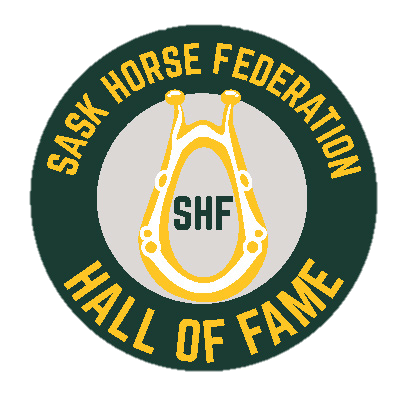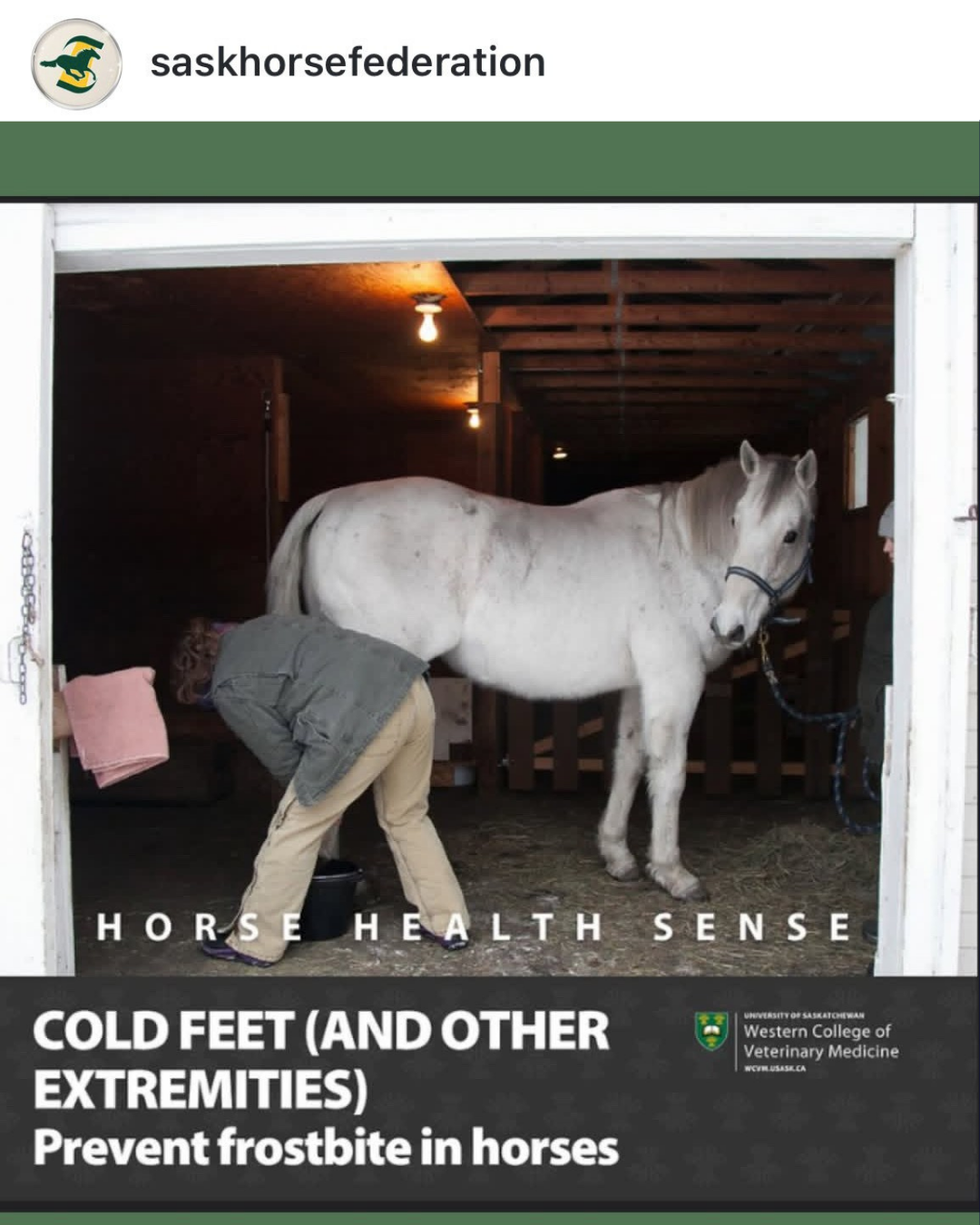First Aid Kits
For the Barn or Trailer
Equi-Health Canada has created an economical conscious and comprehensive first aid kit that includes everything you could ever need for any kind of barn or trailer emergency. When assembling your own kit, make sure you include the essential items (in red) then purchase as many of the others as your budget and storage space allows.
1. aluminum pan – a clean space for wound cream, bandages etc.
2. gauze pads – at least 3×3, as when it comes to horses, bigger is better!
3. cotton roll – an absorbent bandage layer on smaller wounds
4. gauze roll – such as Kling, used as an absorbent bandage layer
5. thick sanitary pads – super absorbent, good for applying direct pressure to a bleeding wound
6. tampons – insert into puncture wounds
7. diapers – an alternative bandage layer or temporary boot
8. self-adhesive bandages – such as Vetrap™, to secure and protect dressings, hold bandages in place
9. duct tape – useful in any emergency; especially good for hoof wraps, as it’s water-resistant, moldable and fairly durable
10. razors – shave hair from around wounds
11. cotton swabs – clean small or delicate wounds
12. 60cc syringe – flush wounds; administer oral fluids
13. peroxide – its bubbling action is good for cleaning dirt out of fresh wounds and for dealing with thrush; don’t use it routinely on a healing wound as it will inhibit the healing process
14. iodine – or an antiseptic scrub such as Betadine® (povidone-iodine, or “tamed” iodine) or Nolvasan (chlorhexidine)
15. Blood Stop – helps stop serious bleeding wounds
16. aloe wound gel – great for healing wounds naturally, as it has minerals, vitamins, amino acids and very strong antibacterial, antiviral and antifungal properties
17. antiseptic wound cream – like Hibitane® cream or Furacin® ointment
18. spray bottle – fill with soap and water and use to clean delicate wounds
19. scrub brush – with fairly soft bristles to scrub larger wounds
20. wash cloth – clean and scrub wounds or use to dry your hands
21. Cool Cast Emollient Leg Bandage – apply to help alleviate swelling
22. plastic wrap – sterile and non-toxic, use as a single layer wound dressing to prevent wound contamination, fluid losses and pain from swelling
23. tube socks – cut out toes and cover bandages for protection, spray with fly spray to keep insects away
24. Epsom salts (magnesium sulfate) – mix with warm water to soak an abscessed foot or use in a poultice
25. stethoscope – inexpensive ones can be purchased through medical supply stores or pharmacies for under $30
26. weight tape/tape measure – use to calculate weight of horse for medication doses
27. rectal veterinary thermometer – or the plastic digital kind, which is safer around the barn and gives faster readings
28. alcohol swabs – good for cleaning small wounds or creating a cleaner site for injections
29. bulldog clip – use to hold a veterinary thermometer to tail for three-minute temp
30. notepad/pencils – write down vitals, important phone numbers
31. lipstick – mark sore spots upon investigation of pain
32. Mineral Ice® – alleviates heat and muscle pain
33. hot/cold pack – alleviates heat and muscle pain; useful when cold hosing an injury isn’t possible
34. rubbing alcohol – for sterilizing instruments; can alleviate pain and itch of stings or bites andsoothe sore joints and muscles
35. hand sanitizer – good for when a hose isn’t handy to ensure you’re not spreading germs
36. latex gloves – keep your hands clean and free from germs and other gross messes
37. face masks – minimize exposure to odours from necrotic tissue, for example, or to protect yourself from spray from wounds/blood/pus
38. wet wipes – use to pre-clean wounds if really dirty; clean your hands
39. antiseptic mouthwash – can be used for bug relief, on scratches and thrush as well as rain rot and bot eggs
40. pair of safety scissors – with rounded ends so you don’t accidentally cut into your horse if you’re snipping off a bandage
41. hoof pick – you can never have too many
42. flashlight/head lamp – to help you see wounds in a gloomy stall or dark field at midnight
43. rope – use as lead if you don’t have one
44. garbage bags – cover large wounds; clean up
45. treats – entice, calm, distract, reward
Also useful, but not shown (available at any drug store):
• lubricating jelly, like Vaseline® – for the thermometer and for protecting the tender skin of your horse’s heels from chapping if you have to cold-hose a leg injury for several days
• medical adhesive tape – for securing certain bandages
• bottle of saline solution – useful for cleaning out wounds in delicate places like around the eyes. A bottle of contact lens saline solution with a squirt nozzle is perfect.
• forceps or tweezers – for removing splinters, ticks, or other nasties
For the Trail
You will need to pack light and only carry the absolute essentials that can be applied for multiple purposes for the temporary treatment of common ailments in both horses and riders. Here are some suggested items:
- First-aid saddlebag. Designate a saddlebag exclusively for first-aid items. Choose one designed to fit over the saddlehorn or attach on a front D- ring. Items kept in front of the saddle helps your horse better balance the weight, and you'll have easy access to your first-aid items during your ride. Tip: Find or make a first-aid emblem to iron on your designated saddlebag, for visibility.
- Multipurpose tool. A good multipurpose tool can help you cut through wire or leather, pull splinters, act as a hoofpick in a pinch, cut bandages? and even saw through small timber. Splurge on a medium to large tool made by a reputable company. Find one with at least a knife, a file, and pliers.
- Emergency Blanket. A lightweight, reflective emergency blanket uses your own body heat to help keep you warm if you're stranded on the trail, exposed to cold water, or suffer an injury resulting in shock. Most models roll up to the size of your fist.
- Flashlight. A flashlight can help you find your way in the dark or find tools you need as the light fades. It can also help you see to analyze wounds. Consider a flashlight with a windup, rechargeable battery so you don't have to pack extra power.
- Duct tape. This all-purpose tape can help you keep a horse or human's bandage in place, tape on a loose shoe, or help pack a hoof to help your horse get back to the trailer. You can also repair tack in a pinch.
- Baling twine. Your use-around-the- barn baling twine is also useful on the trail. Tie up a broken headstall, reattach a rein, etc. If you lack a lead rope, you can even use a long piece to help pony another horse if a rider is injured.
- Hoof boots. If you don't outfit your horse in boots on every trail ride, make sure you have a pair in your pack in case of a thrown shoe or hoof injury. The boot will protect the hoof, hold bandaging material in place, and keep your horse's injury clean on the way home.
- Digital thermometers. Monitor a sick or injured horse, or take a rider's temperature to check for overheating, fever, or shock. Invest in two, and label separately for horse and rider. Make sure that the thermometers go to 107 degrees Fahrenheit to accommodate horses' higher temperatures. Normal human temperature is 98.6 degrees F; normal equine temperature is 98 to 100 degrees F.
- Hoofpick. This handy grooming tool helps you pick out your horse's hooves if he's trapped pain-causing rocks. It can also help you pry open food cans in a pinch. Choose a sturdy hoofpick that doesn't bend easily.
- Large freezer bags. Choose resealable bags so you can pack out waste easily. Clean bags also work to haul water, serve as a bucket to soak your horse's feet, help dress wounds, etc.
- Veterinary bandage/wrap. A roll of the stretchy, sticky wrap helps keep horse and human bandages in place. Place over gauze squares or diapers to help keep open wounds clean and bound with pressure to help stop bleeding.
- Tongue depressors. You can find these at discount stores sold as craft sticks. The wooden sticks will give you a clean way to apply ointment to a wound. They can also be used to splint a rider's finger. (Use with vet wrap or clean hand towels and/or duct tape.)
- Four-inch gauze squares. Pre-cut squares of four-by-four-inch gauze come in sterilized and non-sterilized packages. Opt for a pack of both. These bandages can hold antibiotic ointment against a wound and allow some airflow. They can also act as padding under other wraps and to apply medication. Gauze squares are sometimes sold in a hiker's first-aid kit that includes a small pair of scissors.
- Diapers. Diapers keep antibiotic salve against a wound and can help stop bleeding for horse or human. They are especially handy for cuts on a horse's leg. They also can be used as temporary foot padding to help a horse that's lost a shoe or suffers a hoof injury. Secure with vet wrap or duct tape.
- Hand towels. A clean towel wipes off sweat and can wrap a larger wound. It can also serve as a temporary human arm splint. And if you're near fire, a wet towel can help protect your nasal passages. A wet towel can also cool an overheated human or horse. Send your clean-but-older bathroom hand towels to your kit.
- Wet wipes. Clean a small wound or wash up before and after giving first-aid with wet wipes. Store them in a plastic bag with a zipper so they don't dry out.
- Benadryl (diphenhydramine). This over-the-counter medication is great to have with you in case of horse or human allergic reactions (bee stings, etc.). For humans, liquid forms can act quickly. Ask your veterinarian about when and how much to give to your horse.
- Insect repellent. Keep repellent on hand in case you trek through infested areas or are out at dusk during mosquito season. Opt for a natural brand, unless you ride in the deep woods.
- Saline/contact lens solution. Saline solution is useful to flush out eyes (human and horse's) after being poked or if debris is present. It can also be used to flush a wound.
- Betadine. This disinfectant/antiseptic is useful for flushing out a cut/scrape/wound on horse or human. It's especially recommended if the wound is contaminated with dirt or mud. If a wound is dirty, first rinse with water or contact lens solution, then apply Betadine, rinse with water, and apply an antibiotic ointment and wound dressing.
- Sunscreen. Carry sunscreen in case your riding buddies forget to put it on or so that you can reapply on the trail. If you ride through water or on hot days, it's good to reapply often.
- Triple antibiotic ointment. Apply Neosporin or similar ointment to prevent infection of a wound and help facilitate healing. Opt for the pain-relief option to help humans feel better fast.
- Water. In addition to warding off dehydration and heat stroke, water is great to wash out wounds. Make sure to have pure, clean water with you at all times.
- Ibuprofen. Have it on hand for human (not horse) use in case of injury or a fall to help reduce swelling.
Equine Medical Record
Another very important item to have is a medical record for your horse. This should be kept in a safe but accessible spot in the barn or your home (someone other than you should also know where to find these records). It records all your care/treatment and vital for your horse. This can be very useful to a vet in the treatment of your horse.
You can print your own Equine Medical Record here.





.png)




